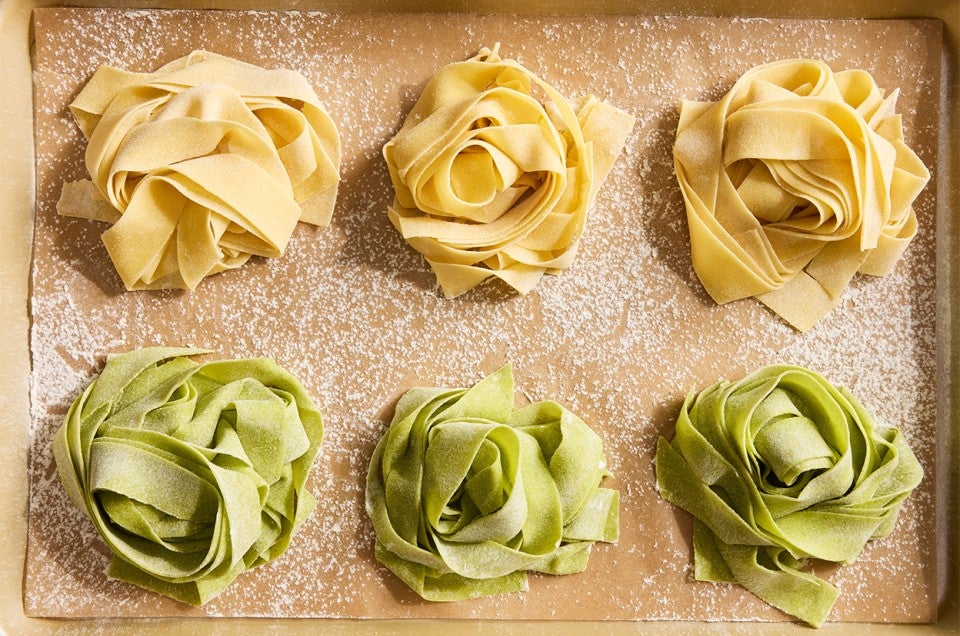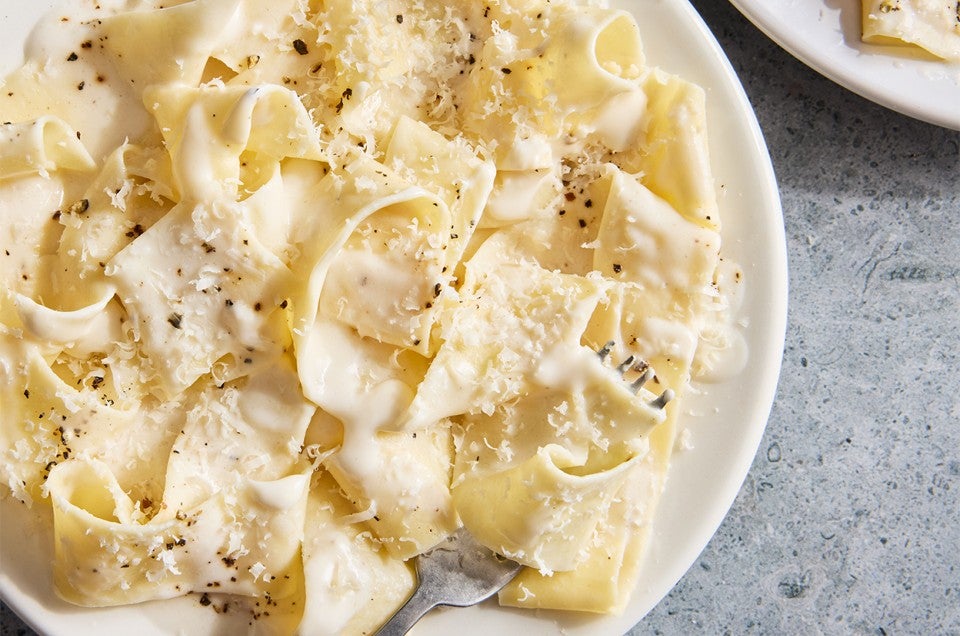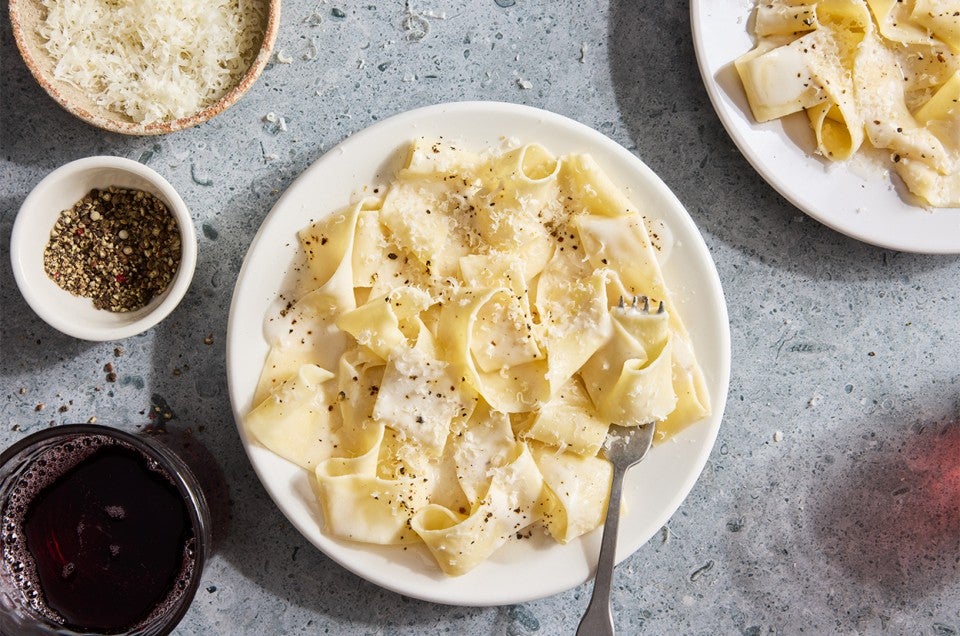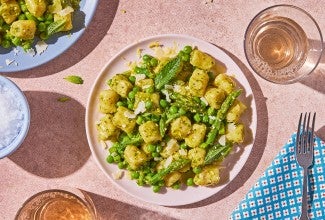-
Weigh each flour; or measure by gently spooning it into a cup, then sweeping off any excess.
-
To make the dough: In a large bowl, whisk together the flours. Scoop them into a mound on a clean work surface. Make a well in the center of the mound deep enough to see the work surface below.
-
Add the sourdough discard and eggs to the well and use a fork to whisk them together, slowly incorporating a bit of the flour around the edges. Continue incorporating more of the flour until the dough starts to form clumps.
-
Add the oil and salt, and mix and knead the dough with your hands, adding water 10g at a time until everything holds together and hardly any dry flour remains; the dough will be stiff and will tear easily. Knead the dough for 5 to 10 minutes, until the dough is smooth and elastic. (See "tips" below for instructions on using a food processor.)
-
Wrap the dough in plastic or place it in an airtight container and set it aside to rest for 1 hour at room temperature; or refrigerate it for up to 1 day.
-
To roll the dough: Divide the dough into three equal pieces, about 185g each. Lightly dredge one piece in flour (keep the other pieces covered).
-
To shape by hand: Use a heavy rolling pin to roll the dough as thinly as possible (1/8" or less, 2mm to 3mm). Cut the dough into several large sheets. Lightly coat the top of the dough sheets with a little semolina flour, then loosely roll them up. Cut the rolled-up dough into strips — about 3/4" wide for pappardelle, 1/2" wide for fettuccine, and just over 1/8" wide for linguine.
To use a pasta machine: Alternatively, roll one piece of dough through a pasta machine once on the largest setting. Fold the dough in thirds like a letter (this helps it become a rectangular shape) before rolling it a second time on the largest setting. Adjust the pasta machine to the next increment and pass the dough through. Continue adjusting the setting and rolling the dough through the machine until you’ve used setting #7 on a standard pasta roller (0.8 mm thick). Generously dust the pasta sheets with flour, cut to your desired length, and run each sheet through the cutting blades of the pasta machine.
-
Curl the strands into loose mounds ("nests") and set them aside until you’re ready to boil them. Repeat with the remaining dough.
-
To boil the pasta: Bring a large pot of heavily salted water to a boil. Add the pasta and cook for 2 to 4 minutes; it should still have a slight bite (al dente). Drain the pasta immediately, reserving some of the cooking liquid for whatever sauce you choose to make, if desired.
-
To store fresh pasta: If you’re planning to cook the pasta later, cover the cut noodles and refrigerate for up to 2 days. (Pasta that has been refrigerated will need to be cooked for longer, about 7 to 9 minutes.) Alternatively, freeze uncooked pasta, well-wrapped, for longer storage.





















